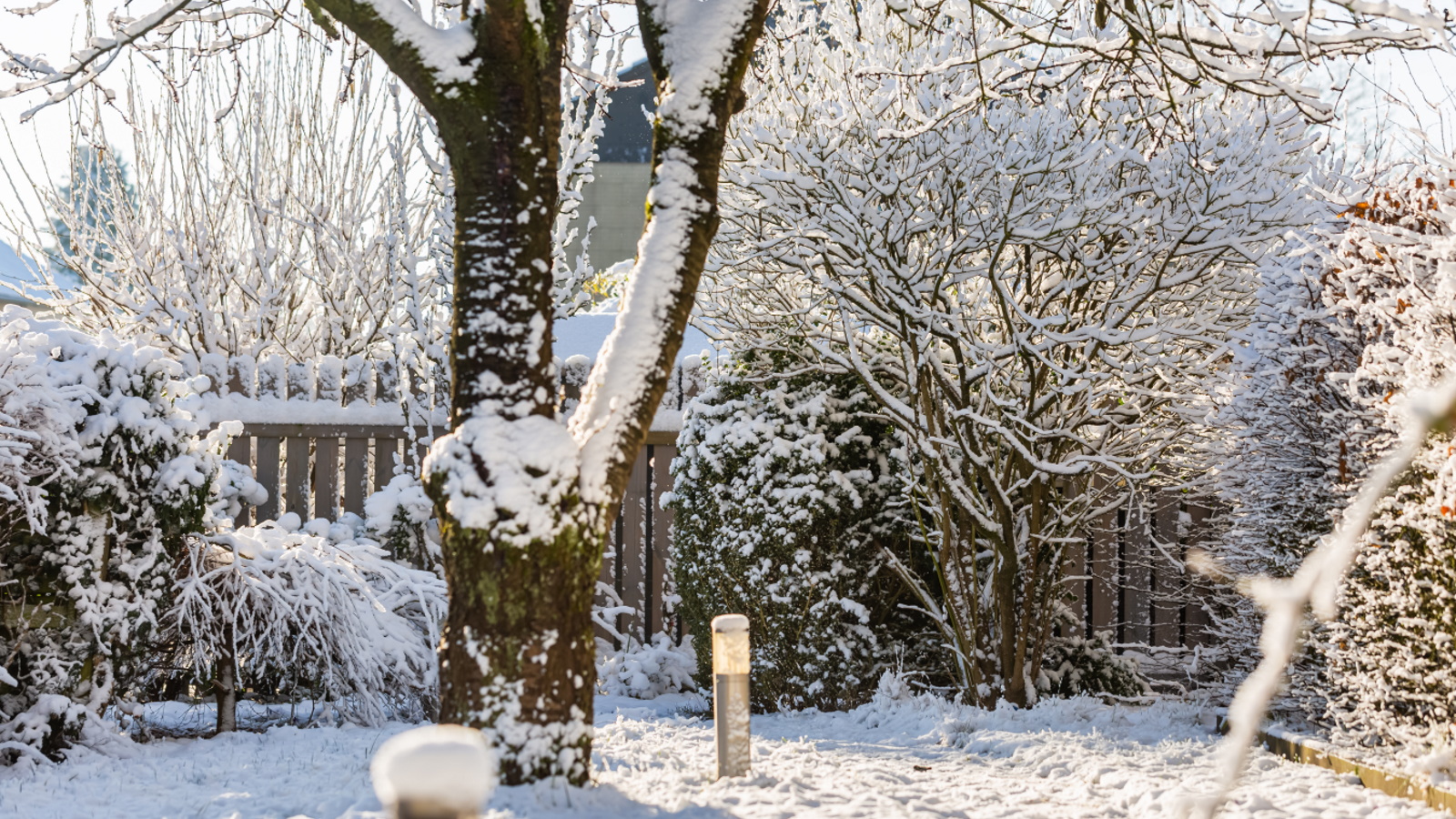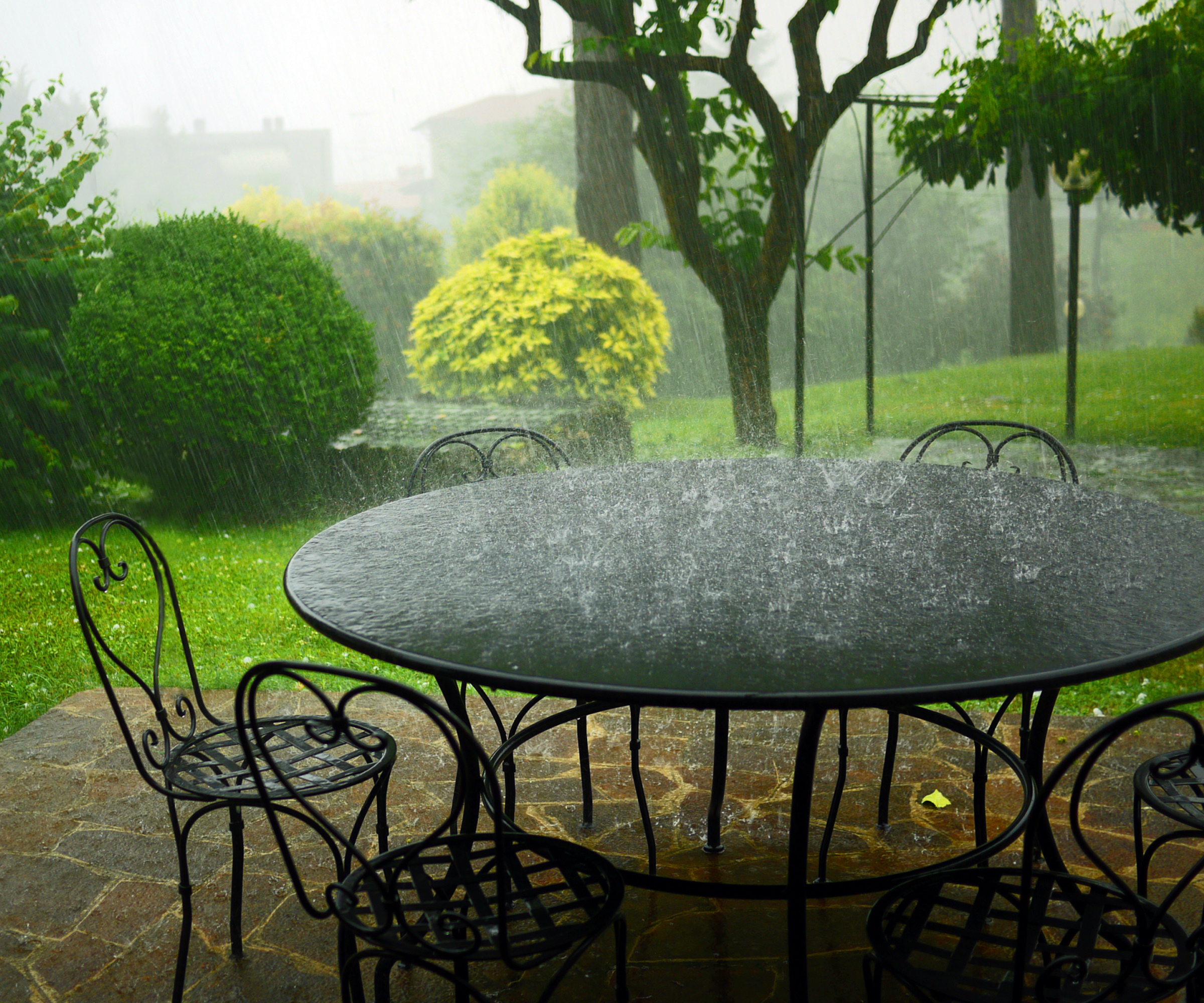Experts reveal how to repair your yard after vicious winter storms
Top tips for fixing up your backyard from extreme weather damage


Winter can be harsh on gardens and it's important to keep on top of the winter gardening checklist to keep plants happy. But sometimes the weather has other plans.
In the past week, the US has experienced fatal winter storms that have caused widespread damage and havoc to backyards.
As the season begins to move on and the warmer months near, restoring yards will be a big priority for many. Fortunately, experts have revealed top tips for repairing and storm-proofing gardens.
'Sometimes in extreme weather no amount of preparation can match mother nature, but there are some tips to help fix storm damage in your garden and some tasks you can do to try and prevent future damage before the next storm strikes,' says Jamie Shipley, managing director of Hedges Direct.

Top tips for repairing your yard after storms

Damage to gardens after extreme weather may look very different in each case, but there are a few things you can do to start restoring your yard.
Jamie recommends not removing fallen foliage straight away. 'Although your first thought might be to remove any fallen leaves to tidy up your yard after a storm, the fallen foliage is actually a great heat insulator and will protect soil from becoming frozen in future cold snaps this winter,' he says.
It can be a good idea to wait until spring to clean up foliage so that they can serve a insulating purpose during colder seasons.
Design expertise in your inbox – from inspiring decorating ideas and beautiful celebrity homes to practical gardening advice and shopping round-ups.
It's also important to leave your lawn alone during this time because it is likely to be over-saturated from heavy rainfall.
'Walking over a lawn that’s waterlogged will force the air out of the soil and when this eventually dries, it will be heavily packed together which can lead to stunted growth in spring. Damaging soil and grass blades can also lead to fungal lawn diseases. We wouldn’t advise mowing your lawn during heavy rain either,' says Samantha Richards, garden gazebo expert at Gazeboshop.
However, after stormy weather may be the perfect time to remove weeds. 'One of the benefits of windy and wet weather is that it can leave the soil in your garden soft which means it's easier to remove the complete root system when weeding,' says Jamie.
'This means after a storm is the perfect time to remove weeds by hand, rather than using chemicals and potentially negatively affecting the soil biodiversity,' he adds.
Using clean tools, like this weeder from Walmart, can assist in this process.

Jamie is the Managing Director at Hedges Direct. He is one of the main contacts for all larger orders; offering a quick turnaround on quotes, speedy AM delivery - on the date of your choice, access to numerous carefully selected suppliers, high quality stock, and competitive pricing.

Samantha is a garden gazebo expert at Gazeboshop.
How to storm-proof your yard

To reduce damage in your backyard from storms, you can take a handful of preventative measures.
Start by fixing down outdoor structures to stop them being swept up in high winds and flying into other things in your yard. You can use things like this ground anchor kit from Amazon to help.
'Flying trampolines, washing lines and bins are not uncommon during a storm. Any loose objects in your garden can simply be swept away if a gust of wind is strong enough, which is why it's vital for anything that isn’t fixed in place to be weighed down,' says Samantha.
It's also important to protect plants before extreme weather kicks in. 'If you don’t want to take any chances, bringing your potted plants indoors - whether that’s inside your greenhouse or porch,' says Samantha.
'For plants that you are unable to move or cover easily, getting them in the best shape possible is recommended for the greatest chance of survival. This can be done by pruning your plants just before the storm hits to ensure there are no loose branches that can easily snap off in heavy winds,' she adds.
Certain plants can also be used as protective structures, Jamie notes. 'It’s a good idea to consider replacing any fences in your garden with a hedge. Unlike a wall or fence, which divert the wind upwards over the obstruction creating turbulence, a hedge filters and calms it, which leads to improved air circulation and the formation of a sheltered micro-climate,' he says.
FAQs
How do you prevent wind rock?
Wind rock refers to when gusts of heavy wind catch new growth at the top of plants and rock them. It loosens the roots beneath ground and creates air traps in surrounding soil. As a result, roots are vulnerable to cold damage.
'To prevent wind rock I recommend using support canes to secure any newly planted trees and shrubs and make a point of re-firming in their roots throughout winter by gently pressing in soil around the plant and adding extra compost to fill in gaps,' says Jamie Shipley, managing director of Hedges Direct.
Seeing your yard in disarray after extreme weather can be disheartening, but these tips can help you start to restore your garden and put measures in place to reduce future storm damage. Make sure to also take care not to make winter garden mistakes so help your yard thrive during harsh seasons.

Tenielle is a Gardens Content Editor at Homes & Gardens. She holds a qualification in MA Magazine Journalism and has over six years of journalistic experience. Before coming to Homes & Gardens, Tenielle was in the editorial department at the Royal Horticultural Society and worked on The Garden magazine. As our in-house houseplant expert, Tenielle writes on a range of solutions to houseplant problems, as well as other 'how to' guides, inspiring garden projects, and the latest gardening news. When she isn't writing, Tenielle can be found propagating her ever-growing collection of indoor plants, helping others overcome common houseplant pests and diseases, volunteering at a local gardening club, and attending gardening workshops, like a composting masterclass.